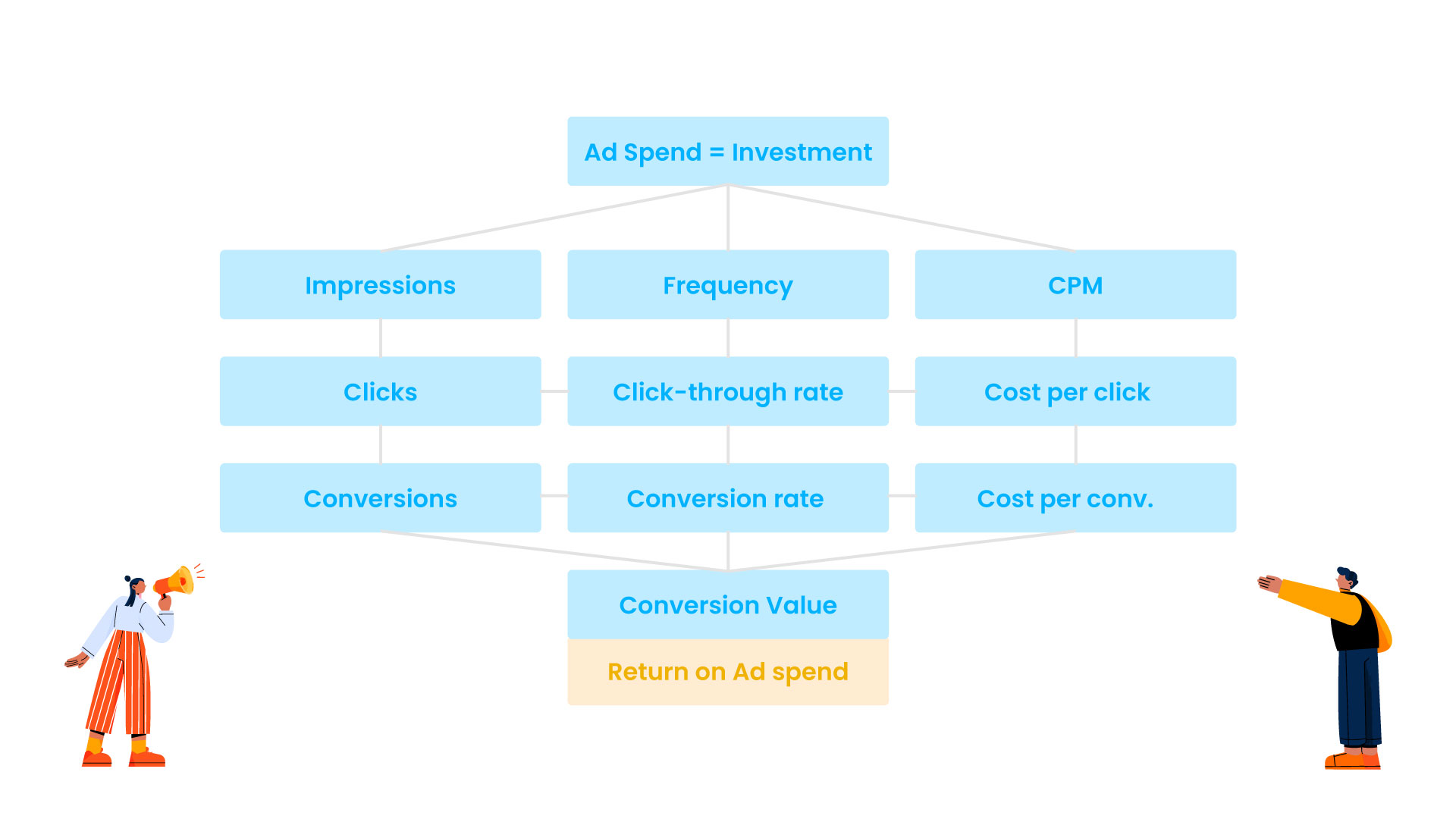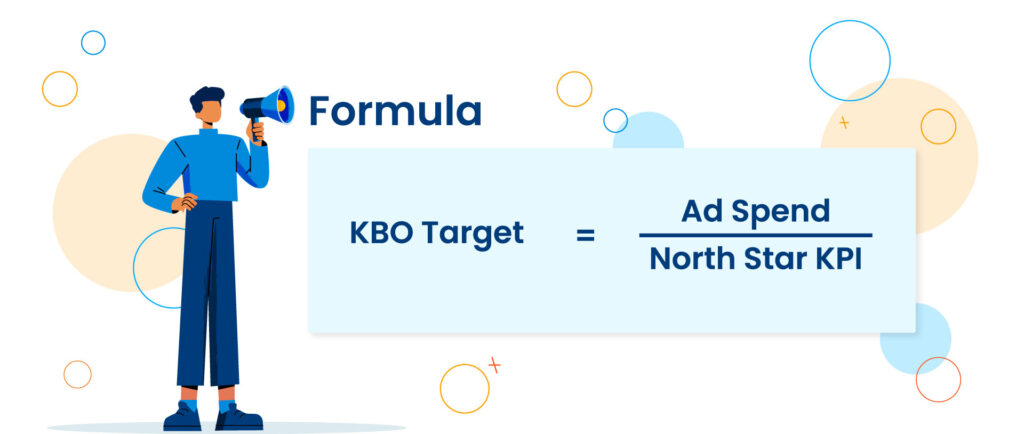The North Star Framework: Unlocking the True ROI of Your Digital Marketing Channels


- By Warren Thompson & Charles Brodeur
- 6 min read


Are you tired of investing in marketing channels without knowing the true return on investment (ROI)? Do you find yourself focusing on vanity metrics like views, likes, and clicks, without actually knowing if your marketing campaigns are driving significant business results? If so, then the Digital Marketing North Star Framework is the solution you’ve been looking for.
In this article, we’ll walk you through how we use this simple but powerful framework provide clarity and help us manage and scale digital marketing campaigns effectively.
The North Star Framework is a model for managing your digital marketing initiatives based on identifying a single, critical metric known as the “North Star KPI.” This KPI represents the value that your marketing initiatives deliver to your business. By keeping the main thing the main thing, this framework enables you to focus on the key business objectives (KBOs) and key performance indicators (KPIs) that truly matter.
To fully understand the North Star Framework, we need to define two important terms: Key Business Objectives (KBOs) and Key Performance Indicators (KPIs).
Key Business Objectives (KBOs) are the desired results you want to achieve in your business. Depending on your industry and business type, your KBOs may revolve around increasing revenue, acquiring customers, or generating leads.
Key Performance Indicators (KPIs), on the other hand, are the critical metrics that measure your performance in achieving your KBOs. These metrics provide insights into how well your marketing initiatives are performing.
Now that we understand the fundamental concepts of the North Star Framework, let’s dive into the details of how it works. At a high level, the framework revolves around the interconnection between your KBOs, KPIs, and various metrics throughout your marketing funnel. We use Marketing Analytics to setup dashboards and reports to detail the North Star Framework.
There are three primary KBOs that businesses will focus on:
Depending on your business model, you’ll prioritize one of these KBOs. For example, if you’re a SaaS company, your primary KBO might be to increase customers (subscribers).
To measure the performance of your marketing initiatives and progress towards your KBOs, you need to identify the most important KPIs. These KPIs act as the critical metrics that drive business growth and decision-making.
Understanding the metrics chain is crucial to comprehending the North Star Framework. Think of your marketing metrics as links in a chain, with each link connected to the next. At the top of the chain, you have your budget or ad spend, which represents your investment in marketing efforts.
As you move down the chain, you encounter different stages of the marketing funnel, including the top of the funnel (TOF), the middle of the funnel (MOF), and the bottom of the funnel (BOF). Finally, at the very bottom of the chain, you have the monetization metrics, which reflect the return on your marketing efforts.
Here’s a breakdown of the metrics within each stage of the funnel:

Now that we’ve explored the mechanics of the North Star Framework, let’s discuss why it’s essential for your marketing success.
One of the key insights of the North Star Framework is that every metric in your marketing funnel is interconnected. A change in one metric can have a cascading effect on other metrics.
For example, a low click-through rate (CTR) can result in less website traffic, which in turn leads to fewer conversions and a lower return on ad spend. Understanding this interconnectedness allows you to identify and address issues affecting your marketing performance.
To simplify the complexity of the metrics chain, the North Star Framework emphasizes the importance of identifying a single North Star KPI. This KPI serves as a tripwire, indicating whether your marketing efforts are on track or need adjustment. By selecting a North Star KPI that reflects your primary KBO, you can quickly assess the overall performance of your marketing campaigns.
One of the greatest benefits of the North Star Framework is its power to simplify your decision-making process. By focusing on the North Star KPI and disregarding other metrics until necessary, you can avoid distractions and concentrate on what truly matters. This level of simplicity enables you to be more proactive in driving results and achieving your business objectives.
Now that we understand the significance of the North Star Framework, let’s discuss how to find your North Star KPI.


To illustrate the concept, let’s draw inspiration from a famous story about the rock band Van Halen. During their tours, Van Halen included a clause in their contract rider that prohibited brown M&M’s backstage.
This seemingly odd request served as a tripwire for the band. If they got back stage and saw brown M&M’s in the bowl, they knew that the event organizer had not read the tour rider and there would potentially be other safety issues.
Similarly, your North Star KPI should act as a tripwire, alerting you to potential problems and guiding your decision-making.
The ultimate purpose of your North Star KPI is to ensure profitability. Running marketing campaigns at a loss can be detrimental to your business in the long run. Thus, your North Star KPI should serve as an indicator of whether your campaigns are generating the desired profitability while achieving your KBOs.
To select the most appropriate North Star KPI, you need to consider your specific KBO. Depending on whether your KBO is revenue, customers, or leads, the selection process may differ slightly. However, the key principle remains the same: choose a North Star KPI that is as low down the funnel as you can. Here are three common choices:
Choosing the bottom-of-funnel metrics as your North Star KPI works because the metrics at the top of the funnel cascade down to the bottom-of-funnel metrics.

The North Star Framework can be distilled into a simple formula:
KBO Target = Ad Spend / North Star KPI
For example, if your KBO Target is to acquire 30 leads per month and your cost-per-lead (CPL) is $100, you can calculate your required ad spend using this formula. In this case, your KBO target would be 30 leads, and your ad spend would be $3000.
Now that you have a solid understanding of the North Star Framework, let’s discuss how to implement it effectively.
To successfully implement the North Star Framework in Google Ads, Facebook & Instagram Ads, and Linkedin Ads, it’s crucial to align your marketing efforts with your chosen North Star KPI. Every decision and action should be driven by the goal of optimizing your North Star KPI.
Monitoring your North Star KPI and other relevant metrics is essential for ensuring the success of your marketing campaigns. By regularly analyzing your performance and comparing it to your KBO targets, you can identify areas for improvement and make data-driven optimizations.
While focusing on your North Star KPI is crucial, it’s important to maintain a proactive mindset. Even if your KPI is performing well, there’s always room for growth and improvement. By continuously striving for better results, you can drive long-term success and outperform your competition.
The North Star Framework is a powerful model that allows you to unlock the true ROI of your digital marketing channels. By identifying a single North Star KPI, you can simplify your decision-making process, focus on what truly matters, and drive significant business results.
Implementing this framework requires aligning your marketing efforts, continuously monitoring and optimizing performance, and maintaining a proactive mindset. With the North Star Framework as your guiding principle, you can confidently navigate the complex landscape of digital marketing and achieve sustainable growth for your business.
Want help implementing this in your business? Talk to a Strategist now for a free 30-minute consultation where we’ll help you identify a North Star KPI for your business.
Be the first one invited to our hands-on workshops, and get updates on our latest digital marketing blog releases.